
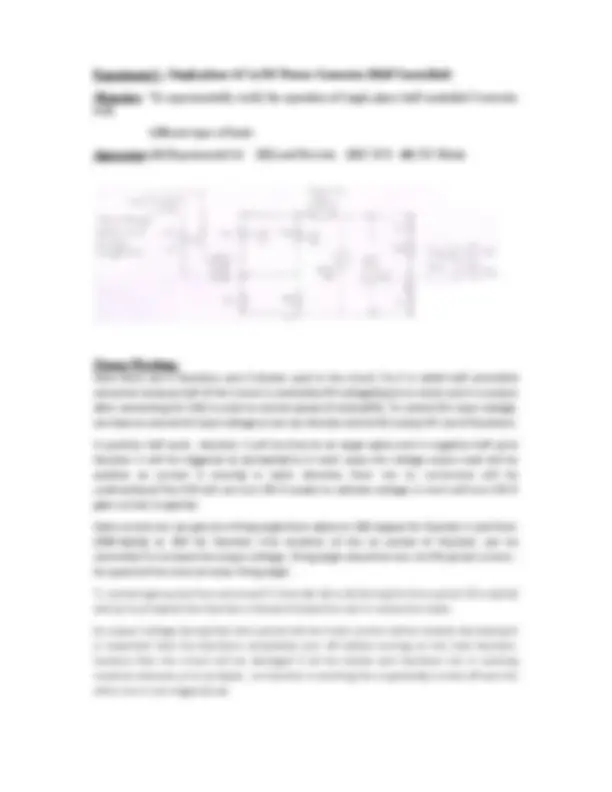
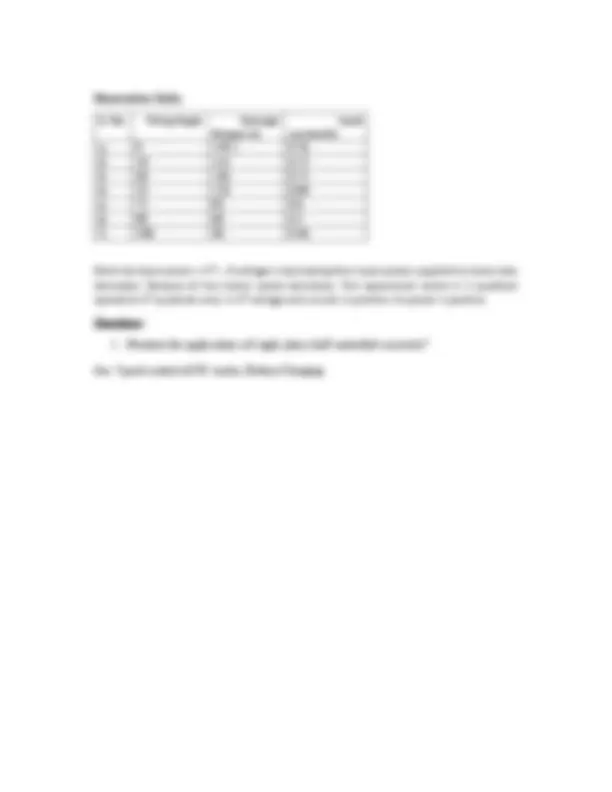
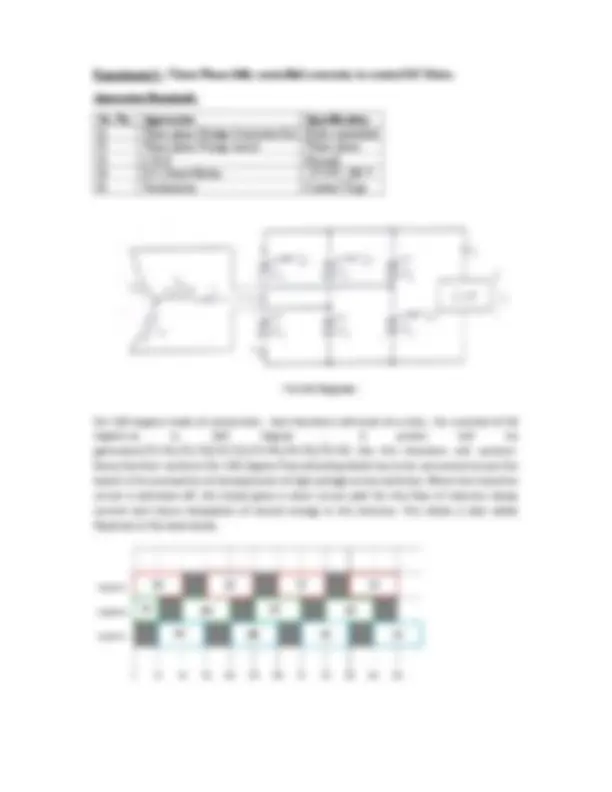
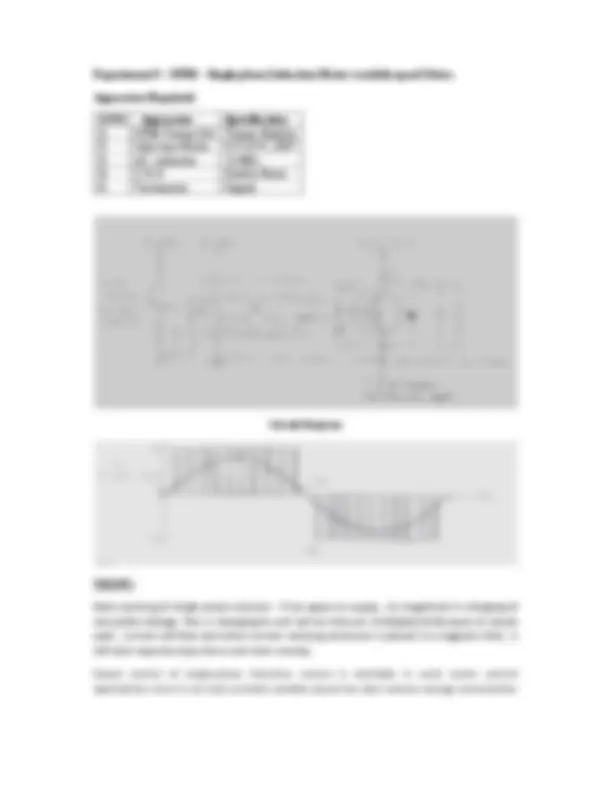
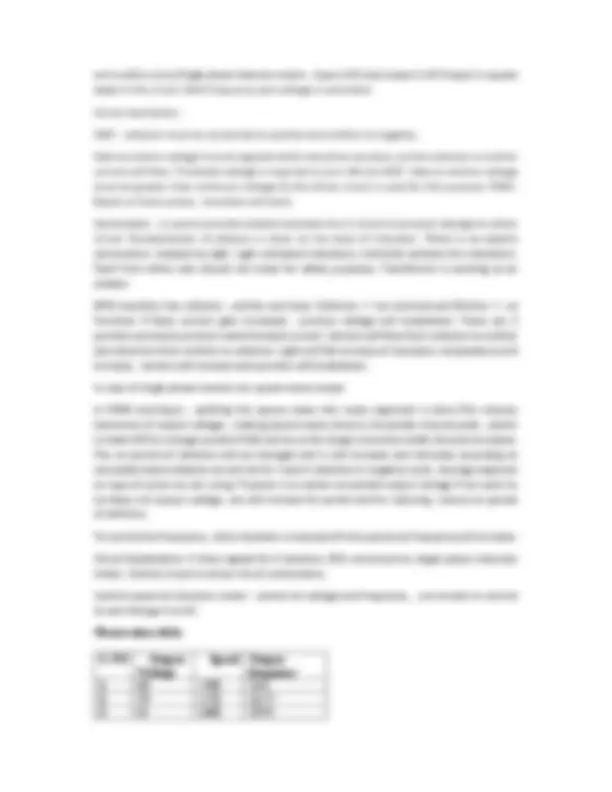

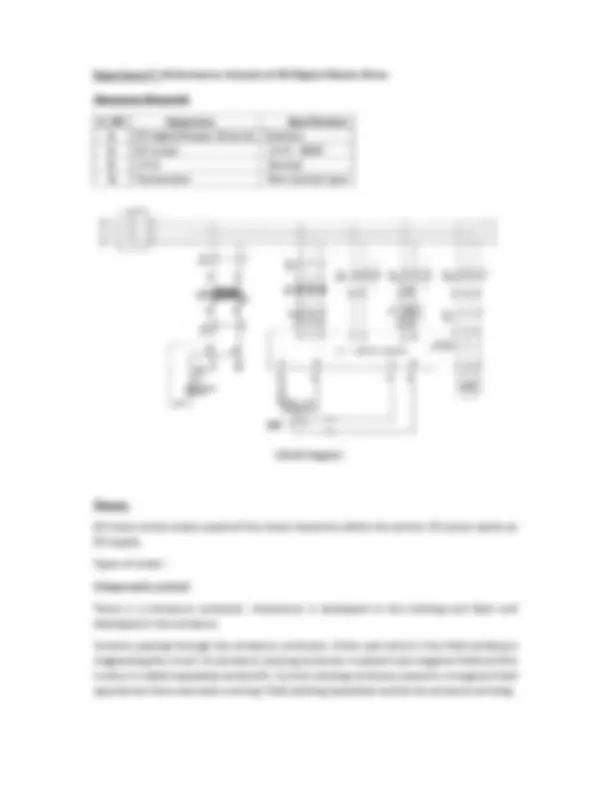
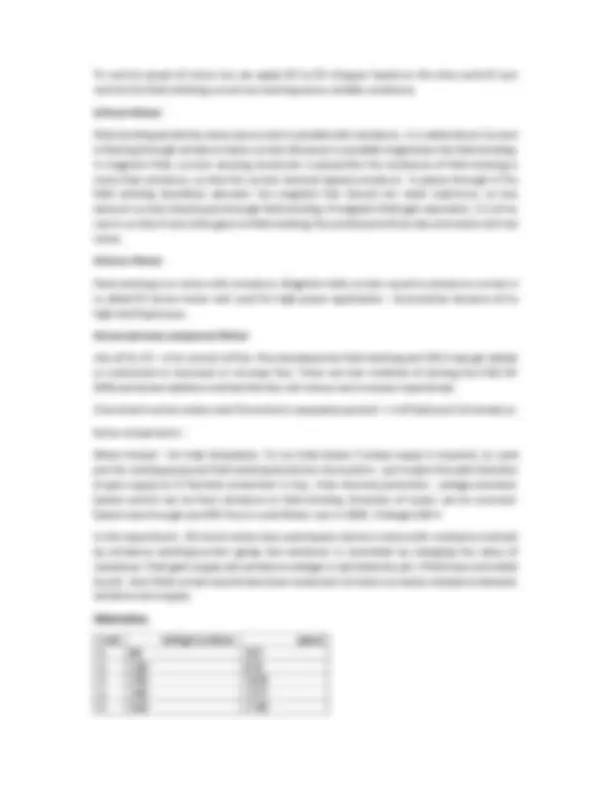
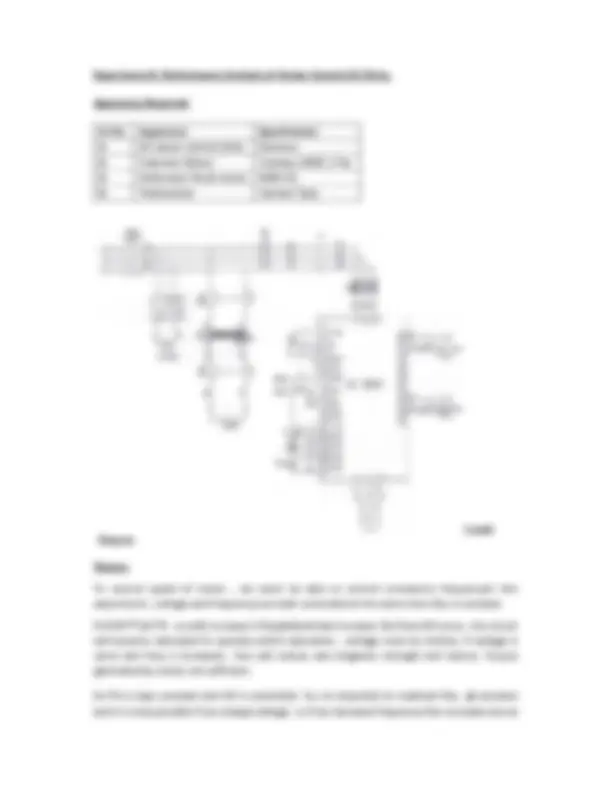
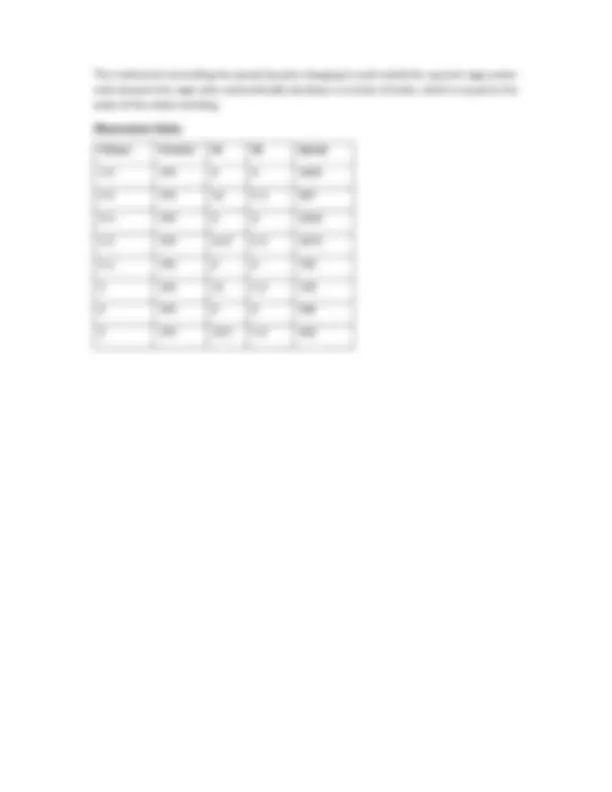


Study with the several resources on Docsity

Earn points by helping other students or get them with a premium plan


Prepare for your exams
Study with the several resources on Docsity

Earn points to download
Earn points by helping other students or get them with a premium plan
Community
Ask the community for help and clear up your study doubts
Discover the best universities in your country according to Docsity users
Free resources
Download our free guides on studying techniques, anxiety management strategies, and thesis advice from Docsity tutors
Lab file with explainations to experiments
Typology: Lab Reports
1 / 18

This page cannot be seen from the preview
Don't miss anything!











Experiment 1 : Single Phase AC to DC Power Converter (Fully Controlled). Objective: To verify experimentally the operation of single phase full Converter Apparatus: : (1) Converter Trainer kit (2) Load Resistance (3) C.R.O. (4) Single phase Variac (5) Isolation Transformer Theory/Working: Here there are 4 thyristors used in the circuit. So it is called fully controlled converter.In half controlled converter , there 2 diodes and 2 thyristors used.DC voltage(input to motor and it is output after converting AC->DC) is used to control speed of motor(DC). To control DC input voltage, we have to control AC input voltage or we can directly control DC output BY use of thyristors. In positive half cycle , thyristor 1 and 4 will work and in negative half cycle thyristor 2 and 3 will be on.So In both cases the voltage across load will be positive as current is moving in same direction from +ve to -ve.Current will be unidirectional. It is the reason why 1st^ and 4th quadrant operation will work here.The SCR will not turn ON if anode to cathode voltage is +ve.It will turn ON if gate current is applied. Gate current we can give at a firing angle from 0 to 180 degree.So duration of the on period of thyristor can be controlled.To increase the output voltage , firing angle should be less. As ON period is more. So speed will be more at lesser firing angle. To measure firing angle - 1 division value is 18 degree.so according with 2 divisions the firing angle wil be 72 degree. T1,T4 will conduct from alpha to (pi+alpha). Only for 180 degree.After that T2 and T3 will conduct from pi+alpha. During the time period [0 to alpha] and [pi to pi+alpha] the thyristor is forward biased but not in conductive state. So output voltage during that time period will be 0 and current will be linearly decreasing.It is important that the thyristors completely turn off before turning on the next thyristor,
because then the circuit will be damaged if all the thyristors are in working mode.So between pi to pi+alpha , no thyristor is working.Two thyristors are gradually getting turned off and the other ones is not triggered yet. Observation Table: S. No. Firing Angle Average Output (v) Load current(A) Speed (rpm)
Observation Table: S. No. Firing Angle Average Output (v) Load current(A)
Experiment 3: Three Phase fully controlled converter to control DC Drive. Apparatus Required: Sr. No. Apparatus Specification
Experiment 4: Three Phase half controlled Converter to control DC Drive. Apparatus Required: Sr. No. Apparatus Specification
Experiment-5: SPIM - Single phase Induction Motor variable speed Drive. Apparatus Required: S.NO Apparatus Specification
Experiment 6: Performance Analysis of AC Servomotor Drive. Apparatus Required: S.NO Apparatus Specification
AC Servo motor drive Seimens
Induction Motor 3H.P, 3 Phase, 400V
Tachometer Non Contact type Circuit Diagram Theory: Components used in AC servo motor 3 phase supply RYB is given. Selector switch for selection of R,Y,B. Isolators - source isolated with load during off load condition. MCB is used for protecting heavy current to load during load condition. Fuse wires - to protect heavy current from affecting load.Circuit Breakers. Application in high power application like inverter , refrigerator. In servo motors , speed control is done by using resistance drop.By varing resistance, voltage drop across it happens just like voltage regulator in fans , uses the variac resistances. It is highly non linear circuit because of highly inductive nature of motor , because of windings. Magnetic field is non-linear. Air gap length is also responsible for non-linear characteristic.
Experiment 7: Performance Analysis of DC Digital Master Drive. Apparatus Required: S. NO Apparatus Specification
To control speed of motor we can apply DC to DC chopper based on the duty cycle.Or just control the field winding current by inserting some variable resistance. 2.Shunt Motor Field winding excited by same source and in parallel with armature , it is called shunt Current is flowing through armature.Same current (because in parallel) magnetises the field winding. In magnetic field, current carrying conductor is placed.But the resistance of field winding is more than armature, so that the current doesnot bypass armature - it passes through it.The field winding shouldnot saturate- the magnetic flux should not reach maximum, so less amount current should pass through field winding. If magnetic field gets saturated , It is of no use to us.Also if very little goes to field winding, flux produced will be less and motor will not move. 3.Series Motor Field winding is in series with armature. Magnetic field current equal to armature current.It is called DC series motor and used for high power application - locomotives because of its high starting torque. 4.Cumulatively compound Motor Use of S1, S2 - is for control of flux. Flux developed by field winding and S1S2 may get added or subtracted to decrease or increase flux. There are two methods of joining the S1S2 BY Differential and additive method.Net flux will reduce and increase respectively. 2 terminal is series motors and 4 terminal is separately excited -> 2 of field and 2 of armature. Some components : Motor blower - for heat dissipation. To run that blower 3 phase suppy is required, so used just for cooling purposes.Field winding at bottom.Connectors - just to give the path.Switches to give supply to IC.Thyristor protection is imp , from thermal protection , voltage overload. Speed control can be from armature or field winding. Direction of motor can be reversed. Speed vary through pot.HRC fuse is used.Motor rpm is 1500 , Voltage-220 V. In this experiment , DC shunt motor was used.Speed control is done with resistance method by armature winding-current going into armature is controlled by changing the value of resistance. Field gets supply and armature voltage is controlled by pot .If field was controlled by pot , then field current would have been measured. So there is a variac resistance between armature and supply. Observation: S.NO Voltage to Motor Speed
the same time if we decrease voltage flux will also decease causing no change in flux and hence it remains constant keeping the ratio of V/f as constant. Hence its name is V/ f method. For controlling the speed of three phase induction motor by V/f method we have to supply variable voltage and frequency which is easily obtained by using converter and inverter set. Observation: S. NO Output Voltage Speed Output frequency V/f
Experiment 9: Speed Control of 3 phase induction motor by pole changing method Apparatus Required: Sr No. Apparatus